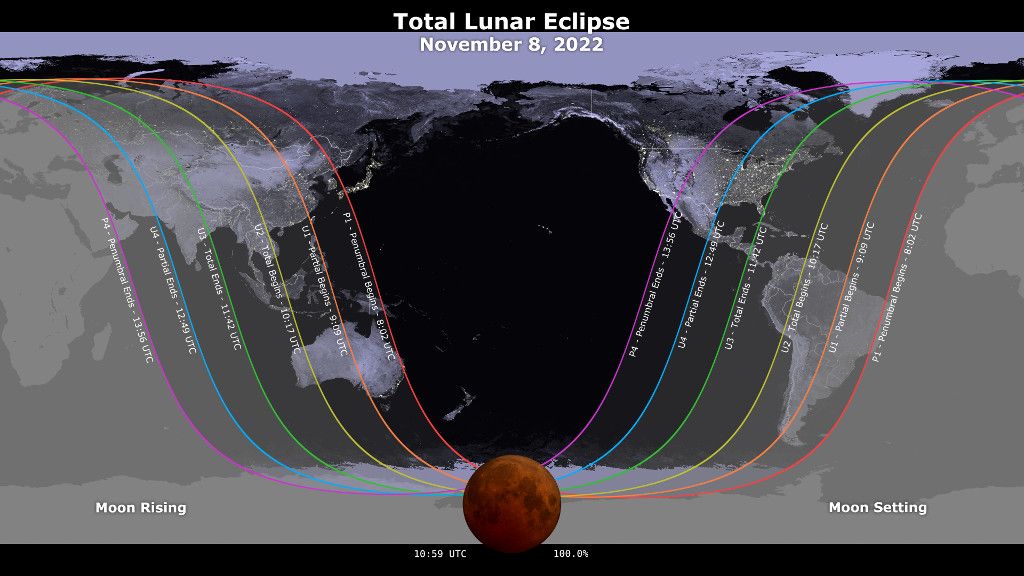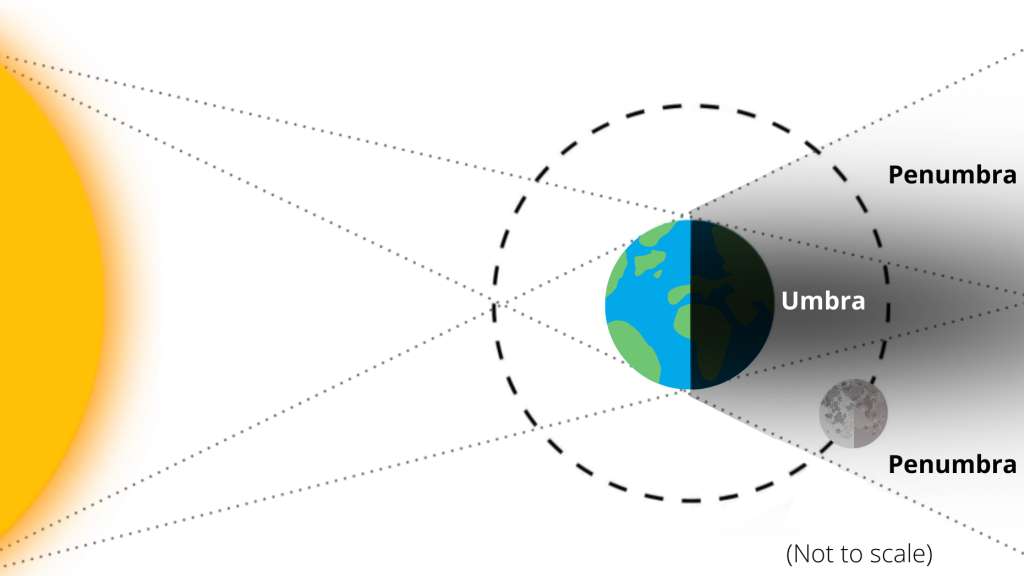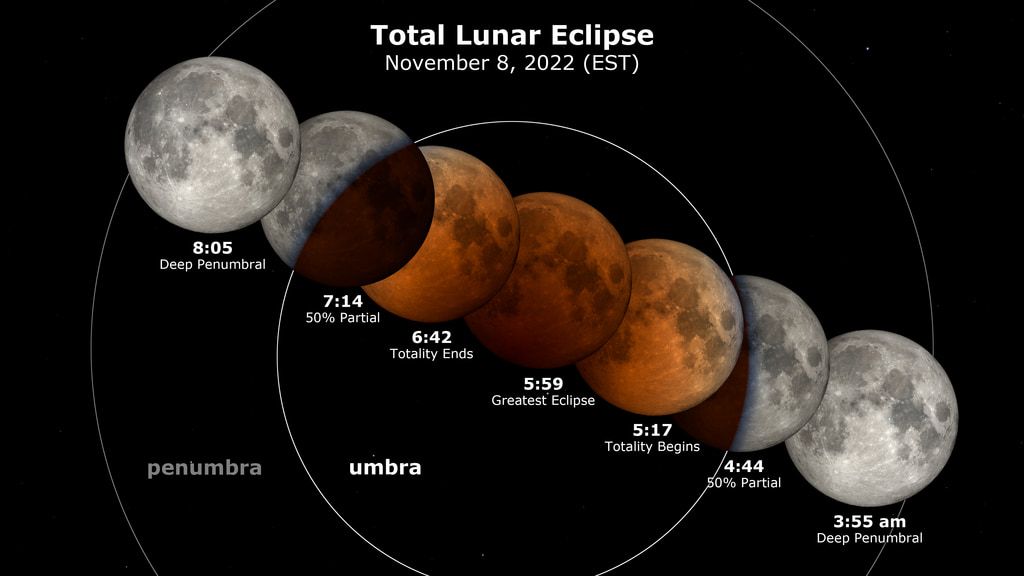
Blood Moon, total lunar eclipse, to take place on November 8: When, how to watch it?
The second total lunar eclipse of 2022, the Blood Moon, will take place on November 8, lasting 85 minutes. During a total eclipse, the Moon will be reddish, almost copper-colored, Space.com reports.
A total lunar eclipse occurs when the full moon appears in the deep shadow of the Earth; that is, when the planet Earth blocks the path of light from the Sun to the Moon and the latter receives only the light previously filtered by the Earth's atmosphere.
Where will this lunar eclipse be visible?
The total eclipse will be visible from North America and parts of South America, Asia, Australia, and New Zealand.
A partial lunar eclipse will be visible from Iceland, parts of South America, South and Central Asia, Russia, eastern Brazil, Argentina, northern Scandinavia, and the Middle East.

On November 8, at 04:44 Eastern Standard Time (EST) (13:44 Armenia time), a partial lunar eclipse will begin. Then at 05:17 EST (14:17 Yerevan time) the total lunar eclipse will begin, which will last until 6:42 EST (15:42 Armenia time). The partial eclipse will be visible until 08:05 EST (17:05 Armenia time).
Armenia will see the partial penumbral phase of the lunar eclipse, which is the weakest visible phase of the lunar eclipse. During the eclipse, it will also be possible to see the seventh planet, Uranus, next to the Moon.
Why does Moon look so red?
Despite its nickname, the Blood Moon, the fully eclipsed Moon has an orange-copper-red color rather than actual blood red.
During a total lunar eclipse, the full moon first passes through Earth's shallow, outer shadow—remaining gray, but getting darker—, and then enters Earth's deep shadow. During this time, the only sunlight reaching the Moon passes through Earth's atmosphere, and the surface of the Moon turns red—due to Rayleigh scattering.

Red, orange, and yellow light have the longest wavelengths, so these light waves collide with fewer particles as they travel through Earth's atmosphere—unlike blue light, which has shorter wavelengths. The more dust or clouds in Earth's atmosphere during an eclipse, the redder the Moon will appear.
How to view lunar eclipse?
Unlike a solar eclipse which requires special glasses to view, a lunar eclipse is completely safe to view with the naked eye. Also, unlike a solar eclipse in which the entire eclipse cycle lasts only a few minutes, a lunar eclipse lasts much longer.
On November 8, the lunar eclipse will last for several hours. The total eclipse will last for 85 minutes and the partial eclipse—for two hours.
To view the lunar eclipse, it is recommended to go out at least an hour before, so that you can first see the partial eclipse, then the total eclipse.

When will next lunar eclipse occur?
The eclipse of November 8 will be the second total lunar eclipse in 2022, the first being on May 16. Two more lunar eclipses will occur in 2023. The first will take place on May 5-6 and will be visible from Eastern Europe, Antarctica, most of Asia, Australia, Africa, as well as the Pacific, Indian, and Atlantic Oceans.
The other—partial—lunar eclipse will take place on October 28-29. It will be visible at least in part from Europe, Asia, Australia, Africa, North America, North and East South America, the Arctic, Antarctica, and the Pacific, Atlantic, and Indian Oceans.
After the partial lunar eclipse on March 25, 2024 and the partial lunar eclipse on September 18, 2024, the next total lunar eclipse will occur on March 14, 2025. The full phase will be visible from North America, South America, and the Pacific Ocean, with some phases visible from Europe, Africa, and Asia.
- Related News
- The end of the Universe: 3 plausible theories of a global apocalypse
- 4 flares erupted from Sun in rare event: the Earth may be hit by geomagnetic storm (video)
- 11 incredible satellite photos published on Earth Day
- Scientists create optical-mechanical quantum memory that can become basis of quantum Internet
- The water found on Moon is enough for about 1 million people - Vladimir Surdin
- There may be life on Venus, claims new research
- Most read
month
week
day
- Huge battery, IP68/IP69K and MIL-STD-810H certifications: Ulefone will present the Armor Pad 3 Pro tablet (photo) 814
- 5 original buildings with curious optical illusions (photos) 673
- How will new technologies change future of finance? Interview with director of Apricot Capital (video) 671
- Metal roofs: What makes them a great choice for small homes? 651
- What risks do crypto and digital currencies pose? Interview with Rasmus Nielsen 640
- WhatsApp will get new and useful feature 585
- 4 flares erupted from Sun in rare event: the Earth may be hit by geomagnetic storm (video) 578
- Android 15 to get two useful new features 565
- Mutated bacteria resistant to drugs found on the ISS: What does this mean and why is it a problem? 561
- 10 most interesting architectural works of Zaha Hadid 551
- Archive
